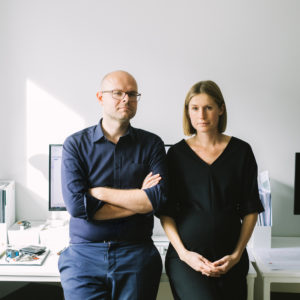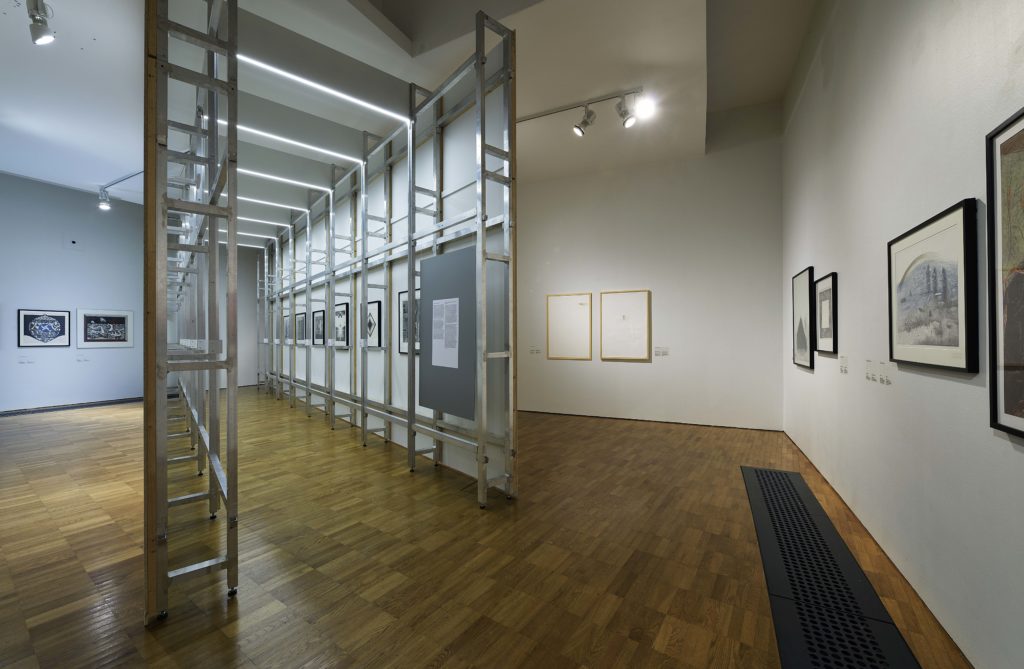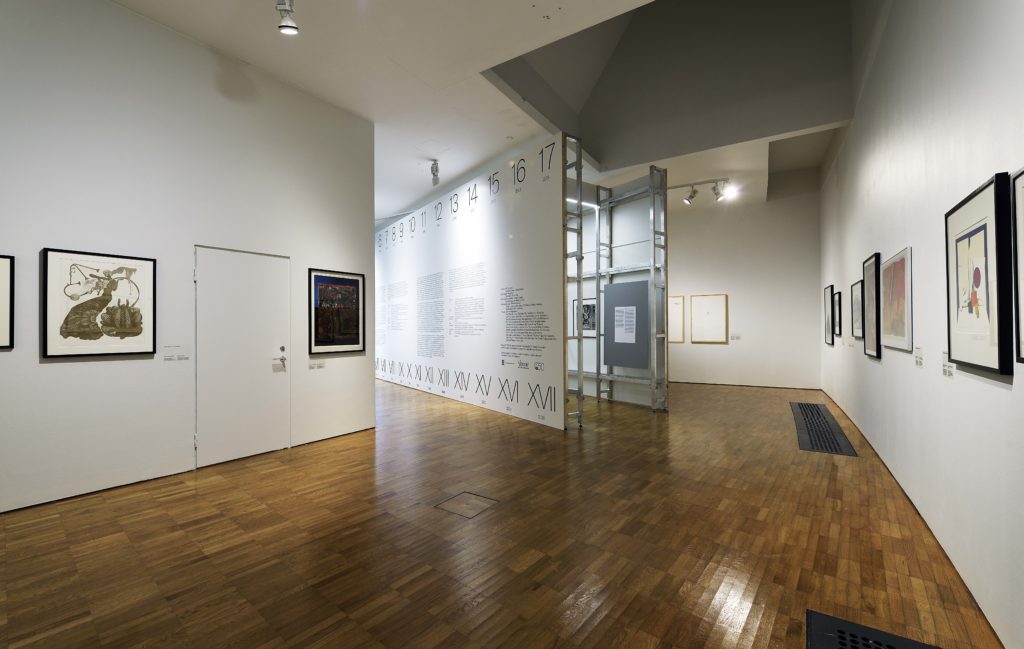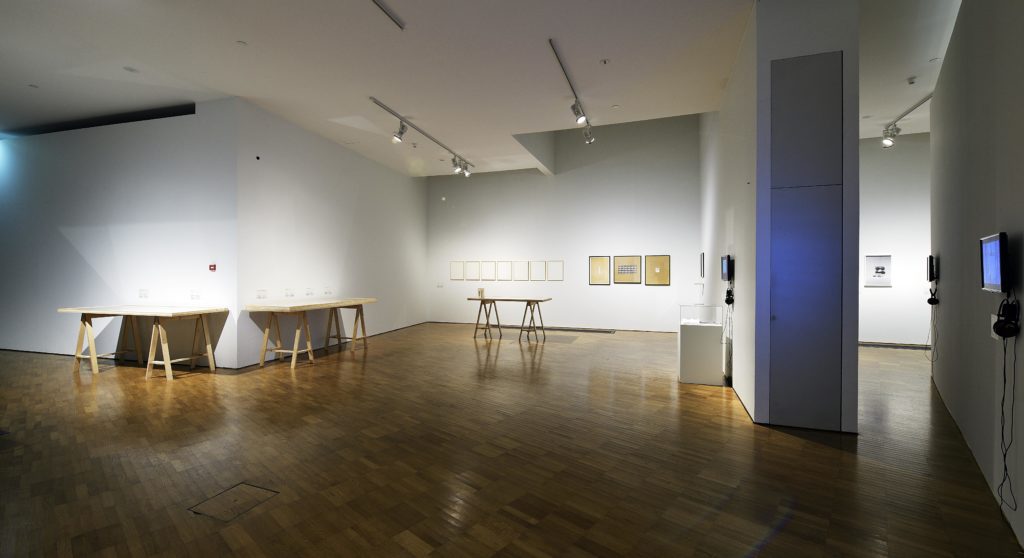The key phrase “Between the lines” was proposed by the exhibition designers and the three “corridors” built in the hall embodies it in quite a physical manner. The minimalist form and colour scheme allowed heterogeneous material to be displayed in a calm and aesthetic manner. The LED strip-based lighting created striking accents – it is a clever solution, economical and impactful. The special character of the items displayed – the light sensitivity of the art works on paper – is well factored in.
Elnara Taidre, co-curator
WE DID NOT HAVE a headline as we were drawing up the exhibit, and we did not have a labyrinth in mind, only the fact that it is a general exhibition on the history of Tallinn’s print triennial. Awarded works were on show as well as many others which did not receive recognition at the triennials, but which are also noteworthy and have had an impact on the art scene. We seized on this interlinear topic.
WE HUNG THE PIECES which had won awards on the walls and in the middle of those works of art a separate line was erected out of KUMU’s common wall structures, meant for the interlinear prints. The works showed the public their naked back-sides, carrying a conceptual meaning which pointed to the rear of the institution, while giving the exhibition an additional layer.
THE DESIGN DOES NOT have to be the first thing you notice, when you step in the exhibit hall –
you might notice the friendly environment. And an art exhibition is an event for the artist(s), not the designer. We provide the setting. A visitor is there more for the artwork than how they are displayed. When we ourselves visit shows Helen’s professional side only takes interest in how the art pieces are arranged. How the space is made comfortable for viewing art and sharpening your focus.
We do not have to play out every single idea on the exhibit preferring to execute one great idea well instead. And there is a difference whether we are designing a temporary or permanent exhibit. The budget also sets its limits.
FINDING A COMMON THEME for a general exhibition is more difficult compared to an individual showing. It does sometimes happen that the curator is startled to find artwork next to each other by a divorced couple or when two artists do not get on well. Human relations are complex… The curators of this exhibit did not intervene in how the room was set up and gave us free rein.
KUMU’s lighting is always complicated, there are few tracks for lights and they are in the wrong places. A special, more dim, light was created for the pieces of art between the lines.
WE ARE ARCHITECTS at heart and designing an exhibition is always an experiment between various things and materials – you do not have the huge responsibility of building an interior for 50 years, but only for five months.
Raul Kalvo, Helen Oja
Ruumipilt 2018


















































































































































































































